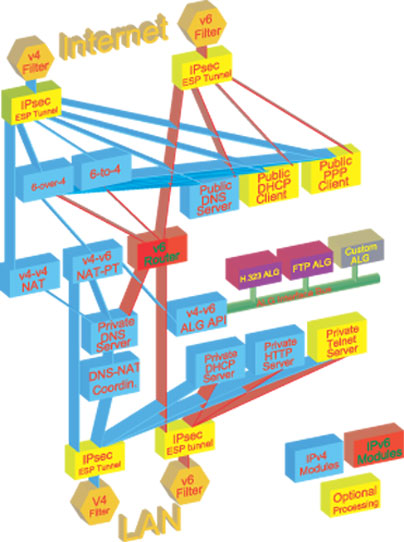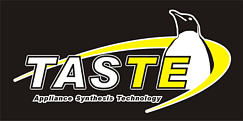ELJonline: New Products (July, 2001)
Jul 1, 2001 — by LinuxDevices Staff — from the LinuxDevices Archive — viewsCentellis CO 21000-12U, Advanced Edge Router, MULTI 2000 IDE and TASTE Suite.
Centellis CO 21000-12U
Force Computers and ZNYX Networks introduce joint series of compact packet-switching backplane platforms.

Designed for easy integration into larger systems, communications equipment developers can employ the CPSB platforms in third-generation (3G) wireless, internet protocol (IP) and voice over internet protocol (VoIP) products.
A new line of compact packet-switching backplane (CPSB) platforms, the Centellis CO 21000-12U series, combines Ethernet switch technology and NEBS Level 3 design chassis for network infrastructure applications. A joint venture of Force Computers and ZNYX Networks, the CPSB platforms can enhance network utilization by consolidating multiple rack components into one CompactPCI system. The Centellis CO 21000-12U series is designed for integration in rackspace-saving network solutions.
Adhering to the most recent PICMG 2.16 CPSB specification, the Centellis series features Linux-based ZNYX OpenArchitect ZX4500 Ethernet switches, each with eight external ports; three 500W 48V power supplies for 1,500W total power; dual fan trays; and up to four 3.5-inch media bays. Other features include 14 PICMG 2.16 specification Link slots, a 12U FaultZone Technology NEBS Level 3 design, 19- or 23-inch rackmounts and an optional telecom alarm module (TAM).
ZNYX's Linux-on-silicon application switch provides carrier-grade features for Layers 2 and 3 in the Centellis platforms, allowing OEMs to implement multigigabit Ethernet switching applications on silicon and run off-the-shelf networking applications without modification. The Force platform includes two nonblocking switches, providing switch-to-switch and port-to-port failover, 64MB buffer RAM and line-rate forwarding of over 6.6 million packets per second.
Manufacturer: Force Computers and ZNYX Networks
Model: Centellis CO 21000-12U series
Suggested retail price: Contact distributor
URL: http://www.znyxnetworks.com/ and http://www.forcecomputers.com
All Aboard! Advanced Edge Router
Service provides connectivity for the IPv4 Internet and a seamless transition to IPv6.

AER consists of a number of modules that interact when transmitting and receiving information to and from the client systems on the LAN. In order to resolve internal and external names and addresses, AER includes both private and external public servers.
InterNetShare, Inc. announced the availability of the All Aboard! Advanced Edge Router (AER) product family, providing secure, multimedia edge-routing devices with a built-in IPv6 transition environment. The All Aboard! AER can be configured via a standard web browser and provides encryption, firewall, multimedia, VPM and IPv4/IPv6 services. IPv6-based LAN services can be added to an IPv4 network without interoperability issues, as AER provides auto configuration and transparent connectivity.
With support for either remote or local web configuration and diagnostic services, AER incorporates an SIIT translation algorithm, DNS extensions to network address translators, IPsec support for shared secret and public key mechanisms, an HTTP-based management system and H.323 routing services. AER products are part of the Advanced Edge family targeted to corporate end users, ISPs and OEMs requiring secure communications among remote LAN users. They are available as a complete device for resellers or as portable source code (for Linux, embedded Linux and other OSes) for OEMs.
Manufacturer: InterNetShare, Inc.
Model: All Aboard! Advanced Edge Router
Suggested retail price: $4,995 US packaged solution; $75,000 US (royalty-free) source code
URL: http://www.internetshare.com/
TASTE Suite
TUXIA releases TASTE 3.1.0, targeting thin client manufacturers and VARs.

TASTE provides software reference designs that can be individually customized. Easy customization tools and a professional builder kit reduce development costs and decrease time-to-market.
TUXIA appliance synthesis technology (TASTE) is a small desktop-compatible embedded OS, based on Linux, that includes a software suite for thin clients and internet appliances. In addition, TUXIA provides the appropriate TSE, a builder kit for customizing TASTE and integrating specific IA functionalities. The TSE application has a GUI and is designed to reduce cost and speed up time-to-market for OEMs and system integrators.
Based on kernel version 2.4, TASTE now includes Nanozilla, TUXIA's embedded version of the Mozilla brower. Nanozilla offers an extensive list of possible plugins: Java Virtual Machine, PersonalJava, SSL, standalone streaming MP3 player, Macromedia Flash, RealPlayer 8, drivers for TV-out and TV-in with zoom mode, and centralized configuration file management by BOOTP. In addition, TASTE supports HTML 4.0 and CSS, SmartCard readers, touchscreen and virtual keyboards, dial-in and dial-out via PPP, and native X for UNIX compatibility.
TASTE uses block compression technology that yields a 3:1 compression ratio, reducing the memory footprint to a minimum while maintaining full-browser functionality. A terminal emulation suite, remote administration management, crash-proof RAM-based software design, short boot-up time and a robust field upgrade mechanism are available, as is support for European, Japanese and Chinese languages.
Manufacturer: TUXIA, Inc.
Model: TASTE
Suggested retail price: Contact manufacturer
MULTI 2000 IDE
IDE offers tools that communicate with each other for easier development.
MULTI adheres to open standards that enable users to avoid proprietary, closed interfaces. It also allows development in the C, C++, Embedded C++, Ada 95 and FORTRAN languages.
Green Hills Software's MULTI 2000 integrated development environment (IDE) is now available for application development for embedded target systems running embedded Linux. MULTI automates all aspects of software development using a window-oriented editor, graphical source-level debugger and program builder. The IDE also includes a version control system, on-line context-sensitive help and an instruction set simulator that allows programmers to develop and test code on a PC or workstation without the need for the target hardware.
Programmers compile and build the kernel using the GCC and makefiles, then use MULTI to build the application program and combine it with the kernel into a single executable image. In addition to maintaining file dependencies, the builder lets users set CPU, compiler, language and optimization options. The core of MULTI is the incremental source-level debugger that supports process- and system-level debugging, providing a separate window for each process.
The MULTI 2000 IDE can be hosted on Windows, Solaris, HP-UX and Linux systems, all of which can be used to develop embedded software for Linux target systems. It is available for Linux target systems based on the PowerPC processor, with x86 support planned for Q3 m00m.
Manufacturer: Green Hills Software, Inc.
Model: MULTI 2000 IDE for Linux
Suggested retail price: $5,900 US
URL: http://www.ghs.com/
Copyright © 2001 Specialized Systems Consultants, Inc. All rights reserved. Embedded Linux Journal Online is a cooperative project of Embedded Linux Journal and LinuxDevices.com.
This article was originally published on LinuxDevices.com and has been donated to the open source community by QuinStreet Inc. Please visit LinuxToday.com for up-to-date news and articles about Linux and open source.